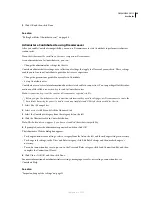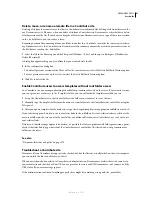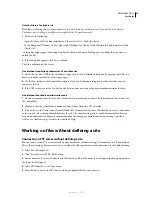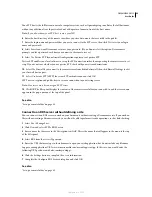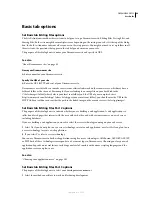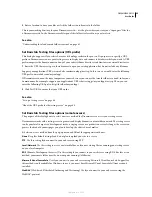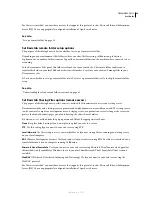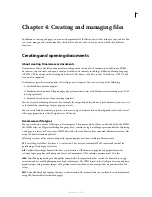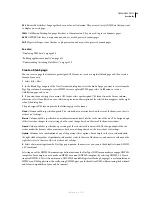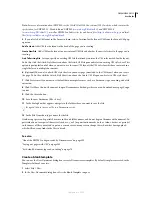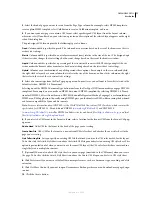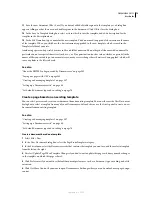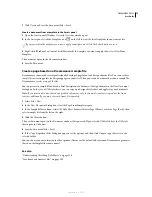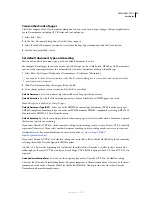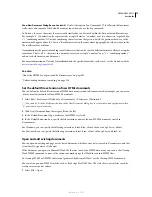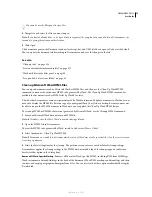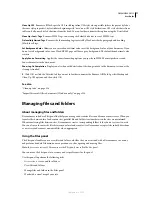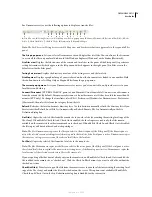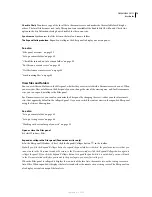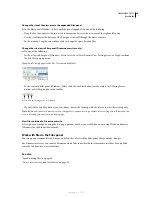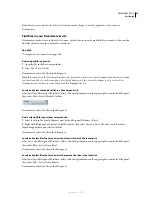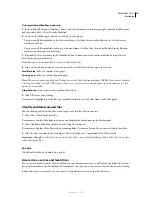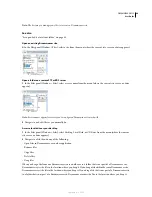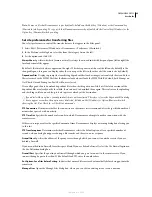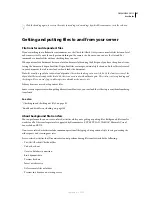
DREAMWEAVER CS3
User Guide
74
Create other kinds of pages
The Other category of the New Document dialog box lets you create various types of pages that you might want to
use in Dreamweaver, including C#, VBScript, and text-only pages.
1
Select File > New.
2
In the New Document dialog box, select the Other category.
3
Select the kind of document you want to create from the Page Type column and click the Create button.
4
Save the document (File > Save).
Set default document type and encoding
You can define which document type is used as a default document for a site.
For example, if most pages in your site are of a specific file type (such as Cold Fusion, HTML, or ASP documents),
you can set document preferences that automatically create new documents of the specified file type.
1
Select Edit > Preferences (Windows) or Dreamweaver > Preferences (Macintosh).
You can also click the Preferences button in the New Document dialog box to set new document preferences when
you create a new document.
2
Click New Document from the category list on the left.
3
Set or change preferences as necessary, and click OK to save them.
Default Document
Select a document type that will be used for pages that you create.
Default Extension
Specify the file extension you prefer (.htm or .html) for new HTML pages you create.
Note:
This option is disabled for other file types.
Default Document Type (DDT)
Select one of the XHTML document type definitions (DTD) to make new pages
XHTML-compliant. For example, you can make an HTML document XHTML-compliant by selecting XHTML 1.0
Transitional or XHTML 1.0 Strict from the menu.
Default Encoding
Specify the encoding to be used when a new page is created, as well as when a document is opened
that does not specify any encoding.
If you select Unicode (UTF-8) as the document encoding, entity encoding is not necessary because UTF-8 can safely
represent all characters. If you select another document encoding, entity encoding may be necessary to represent
certain characters. For more information on character entities, see
www.w3.org/TR/REC-
html40/sgml/entities.html
.
If you select Unicode (UTF-8) as a default encoding, you can include a Byte Order Mark (BOM) in the document by
selecting the Include Unicode Signature (BOM) option.
A BOM is 2-4 bytes at the beginning of a text file that identifies a file as Unicode, as well as the byte order of the
following bytes. Because UTF-8 has no byte order, adding a UTF-8 BOM is optional. For UTF-16 and UTF-32, it is
required.
Unicode Normalization Form
Select one of these options if you select Unicode (UTF-8) as a default encoding.
There are four Unicode Normalization Forms. The most important is Normalization Form C because it's the most
common one used in the Character Model for the World Wide Web. Adobe provides the other three Unicode
Normalization Forms for completeness.
September 4, 2007

